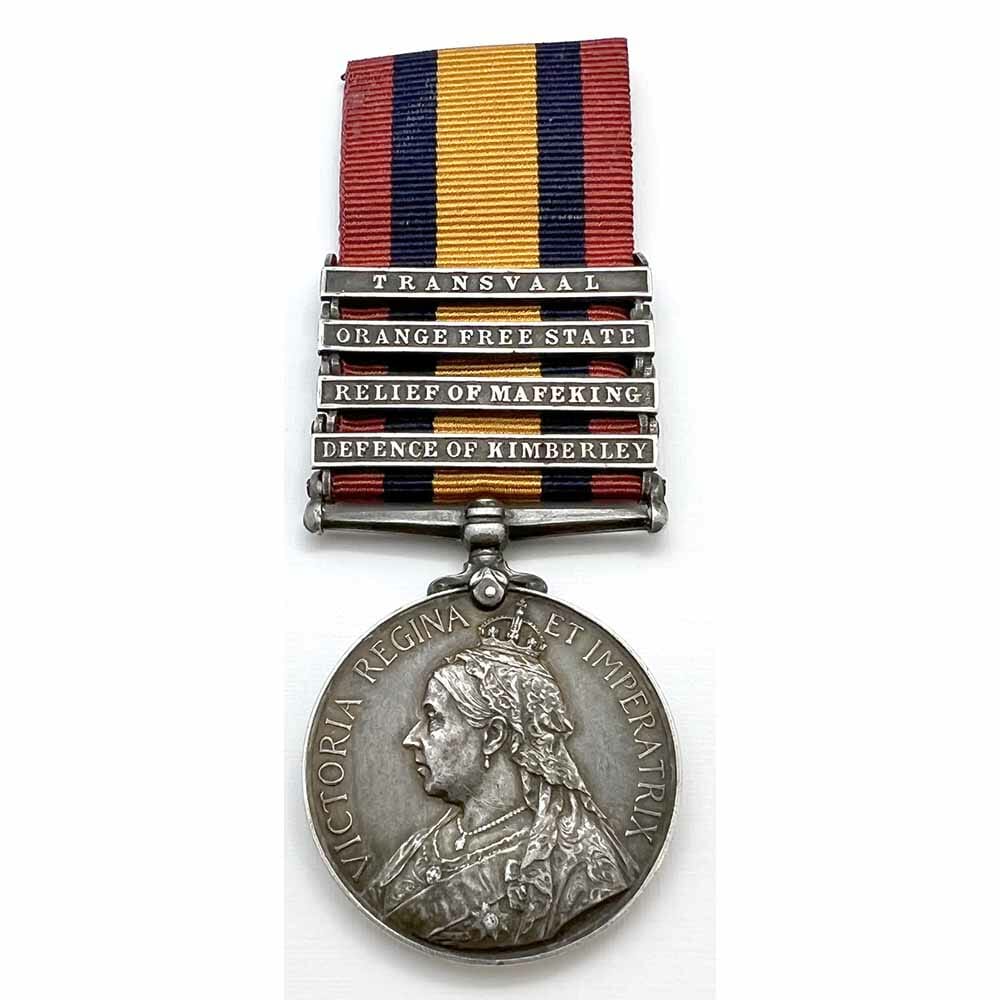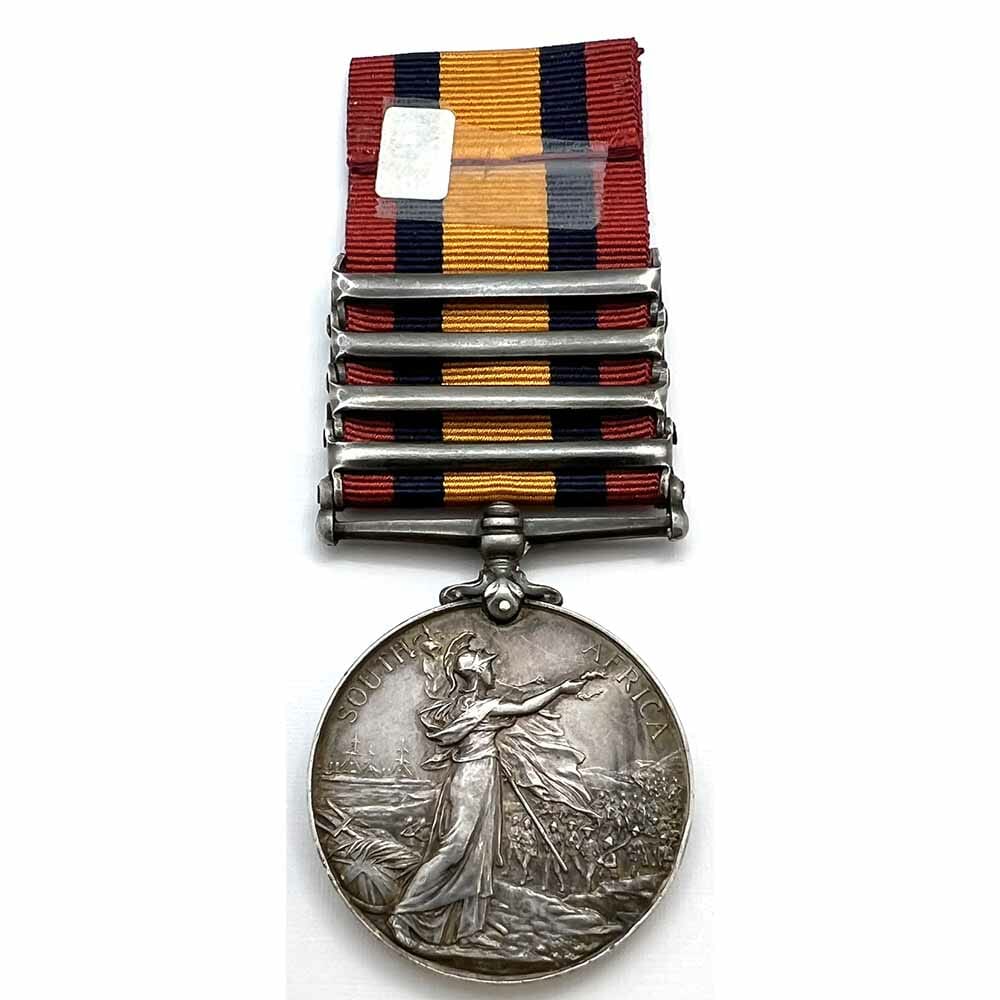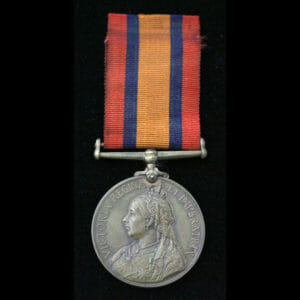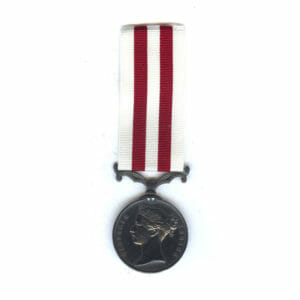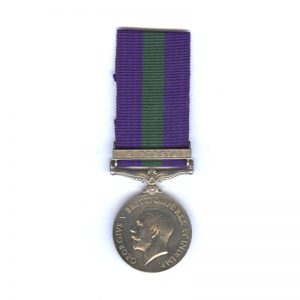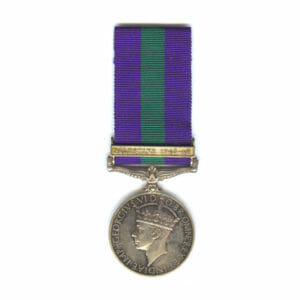Description
Queen’s South Africa Medal, 4 bars, Defence of Kimberley, Relief of Mafeking, Orange Free State, Transvaal, Pte Robert Francis Gainsford, Kimberley Town Guard.
Gainsford was Wounded Severely on 7th March 1902 in action at De Klipdrift, at the time he was serving with the Special Contingent, Cape Police. At this lengthy and bloody battle, De La Rey had ambushed a British column under Methuen, most of the men had not seen action before and fled the battle or surrendered, however seasoned soldier Private Gainsford seem to have remained and received a severe wound, Methuen rode around rallying his troops, as the battle lasted from Dawn until 9:30 am, after Methuen was wounded and dismounted, having his horse land on him and break his leg, he would become the only General to be taken as a prisoner by the Boers.
De La Rey however sent Methuen straight to a British Hospital in his personal carriage under a flag of truce, whilst his men pleaded for his execution. Upon hearing of the loss, a badly shaken Lord Kitchener retired to his bedroom for 2 days and even refused to eat.
Robert Francis Gainsford was a little older than your typical soldier, he was born in Strand London, on 10th November 1857 and baptised at St Anne in Soho later that year.
As a young baby, barely 1 years old, he sailed with his family, Edward Gainsford, a shoe maker, and Caroline Louise Lefley, on the Emigrant ship Vocalist, from the port of Liverpool, on 16th November 1858, embarking for a new life in South Africa as settlers.
However there was a slight issue, the family were “crippled”, his father, was an effective boot maker but did not have the use of his legs, their eligibility as settlers was questioned, but a strong recommendation from the Parish Clergy of St Annes, Soho, led to a permit being issued.
When the ship arrived in Algoa Bay, there were about 418 immigrants but about 135 permit cases.
Things would not be so easy to get off the ship, as a breakwater was in progress of being built but had to be abandoned, Edward was eventually carried off the ship and taken ashore.
He would make a good business as a Shoemaker and the future Gainsford family would boast a number of successful children, including a South African Union Rugby Player.
When the Boer War began, Robert was living in Kimberley, with his family.
He joined the Kimberley Town Guard with the Premier Mine section, and following the Relief of the Siege, joined the Kimberley Light Horse from 8th March 1900 until 5th June 1900.
With Kimberley safe, Volunteers were invited to set off with Colonel Mahon’s Flying Column, which would successfully go on to relieve the siege at Mafeking.
After serving with the Kimberley Light Horse, he then joined the Special Contingent of the Cape Police to serve out the remainder of the war.
Some details on the action where he was wounded at Tweebosch/De Kipdrift on 7th March 1902:
“On 7 March De la Rey ambushed Methuen’s column at Tweebosch on the Little Harts River. The British force numbered 1250, including nearly 1000 mounted men and four guns. Methuen’s force was largely made up of green troops; these panicked and fled or surrendered.
Only the British regulars in the column fought stubbornly in the combat which lasted from dawn until 9:30 am. The British lost 200 killed and wounded, plus 600 men and all four guns captured. After being wounded twice and suffering a broken leg when his horse fell on him, Methuen was captured. He was the only general taken prisoner by the Boers during the war.
De la Rey sent the wounded Methuen to a British hospital in his own carriage under a flag of truce, despite demands from his own troops to execute him. Upon hearing news of the disaster, a badly shaken Kitchener retired to his bedroom for two days and refused to eat.”
He died on 6th December 1927, at 9 Cheshunt Road, Forest Gate, Essex, his wife was Ann Elizabeth Gainsford, whom he had only just married earlier that year on 15th February 1927.
